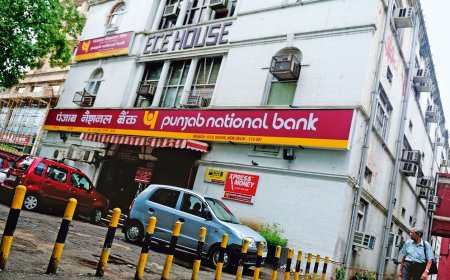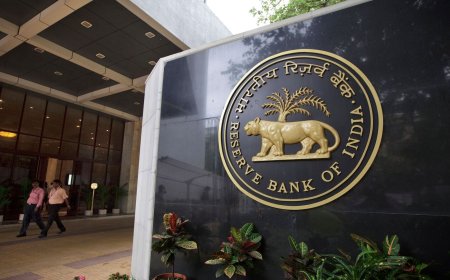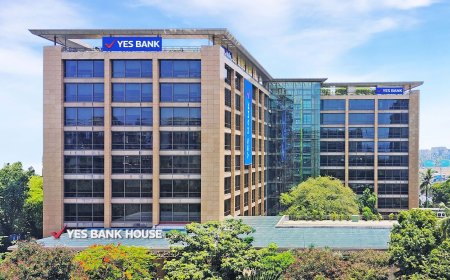13,000 workers, 94% done: Navi Mumbai airport nears completion, set to begin operations by September 30
Navi Mumbai International Airport nears completion with 94% of work done. Adani-led project set to begin operations by September 30, 2025, transforming regional connectivity.

Navi Mumbai International Airport Inches Towards Operational Launch
In a significant boost to India’s aviation infrastructure, the long-anticipated Navi Mumbai International Airport (NMIA) has reached 94% completion, with commercial operations expected to commence by September 30, 2025. With around 13,000 workers currently deployed on-site, the project has entered its final stages of development. The ambitious greenfield project, developed by Navi Mumbai International Airport Limited (NMIAL)—a subsidiary of Adani Enterprises—is being positioned as a game-changer for air travel in western India.
Final Countdown Begins for India's Next Major Aviation Hub
The Navi Mumbai airport, envisioned to ease congestion at Mumbai's Chhatrapati Shivaji Maharaj International Airport (CSMIA), is being constructed over 1,160 hectares in Ulwe, Navi Mumbai. Once operational, NMIA is expected to handle 20 million passengers annually in its initial phase, with capacity scaling up to 90 million upon full completion. The airport will feature two parallel runways, a cutting-edge passenger terminal, and multimodal connectivity including rail, road, and metro access.
An official from the Maharashtra Industrial Development Corporation (MIDC), which is supervising land acquisition and local coordination, confirmed that the major civil and structural work is complete. “With finishing work in progress and testing of various systems underway, we are confident of meeting the September 30 target,” the official said.
Adani Group's Strategic Push in Infrastructure Development
The Adani Group, which took over NMIA's development in 2021, has accelerated progress with substantial financial and logistical muscle. Adani Enterprises Chairman Gautam Adani, in a recent quarterly address, described the Navi Mumbai airport as “the gateway to India’s next phase of urban aviation growth.”
“Our infrastructure strategy is focused on developing integrated hubs that boost regional development while supporting national ambitions,” Adani noted. “NMIA will serve as a benchmark in sustainable airport design and digital passenger experience.”
The project features sustainability innovations like solar power generation, rainwater harvesting, and green building materials, aligning with India's net-zero goals.
Market Context and Economic Impact
The NMIA project has garnered interest across sectors, particularly real estate, logistics, and retail. Property prices in Navi Mumbai, particularly Ulwe and Dronagiri, have seen a 25–30% surge over the past two years, reflecting bullish sentiment. Analysts believe this trend will intensify as the airport becomes operational.
“Once NMIA opens, Navi Mumbai will transform into a commercial nucleus,” said Shubham Mehta, analyst at ICICI Securities. “From cargo movement to MICE tourism (Meetings, Incentives, Conferences, and Exhibitions), the region will draw investments from both domestic and global players.”
India's civil aviation market, one of the fastest-growing in the world, is projected to reach 400 million passenger trips by 2030. NMIA's timely launch supports this growth trajectory and aligns with the government’s UDAN scheme aimed at regional connectivity.
Investor Outlook: Infrastructure and Airline Stocks in Focus
The approaching NMIA deadline has ignited investor optimism in related sectors. Adani Enterprises shares have gained nearly 9% over the last month, while stocks of airline companies like InterGlobe Aviation (IndiGo) and SpiceJet have also shown upward movement on expectations of higher airport capacity and better on-time performance.
“Adani’s infrastructure-led strategy in airports, ports, and energy is creating synergy and investor confidence,” said Ashwini Prakash, fund manager at HDFC Mutual Fund. “Navi Mumbai airport is not just a real estate or aviation play—it’s part of a long-term India growth story.”
With public-private partnerships (PPPs) driving large infrastructure projects, NMIA stands as a testament to successful collaboration between central, state, and private stakeholders.
Looking Ahead: Multimodal Access and Expansion Potential
NMIA’s location offers seamless connectivity to Mumbai via the Mumbai Trans Harbour Link (MTHL), the under-construction Navi Mumbai Metro, and the Sion-Panvel Expressway. Future plans include a direct high-speed rail link and integrated freight corridor, enhancing accessibility and utility.
According to sources close to the project, the initial operational readiness trials—mandatory for airport certification—will begin by mid-August. Airlines are expected to start trial flights by early September.
Civil Aviation Minister Jyotiraditya Scindia is scheduled to inaugurate the final phase of the project in late August, marking a symbolic transition from construction to commissioning.
A Strategic Milestone for Indian Aviation
With its strategic location, sustainability features, and integrated infrastructure, the Navi Mumbai International Airport is poised to become a cornerstone of India’s aviation future. As the countdown to September 30 continues, the project symbolizes India’s broader ambitions for smart infrastructure, regional development, and global connectivity.
What's Your Reaction?
 Like
0
Like
0
 Dislike
0
Dislike
0
 Love
0
Love
0
 Funny
0
Funny
0
 Angry
0
Angry
0
 Sad
0
Sad
0
 Wow
0
Wow
0












































































